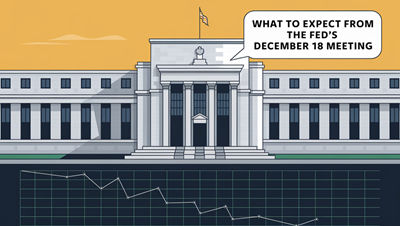MarketLens
Effects of the Bank of Japan’s Interest Rate Increase on Investors and the Stock Market in Japan
After a prolonged period of negative interest rates, the Bank of Japan (BOJ) has implemented a rate hike for the first time since 2007. This historic move marks the end of an unconventional monetary policy measure that aimed to stimulate the Japanese economy. The decision to raise interest rates has significant implications for investors and the Japanese stock market. This report analyzes the potential impacts and outlines what this policy shift means for the economic landscape in Japan.
Background
The Bank of Japan’s negative interest rate policy was introduced in 2016 as a desperate measure to combat deflation and encourage lending and spending. However, on March 19, 2024, the BOJ raised its benchmark interest rate from minus 0.1% to between 0 to 0.1%. This decision comes after signaling the change well in advance, which has resulted in a relatively calm market reaction.
Analysis of the Interest Rate Hike
Implications for Investors
The end of negative interest rates is a clear signal of the BOJ’s confidence in the Japanese economy’s stability and a response to sustained inflation. For investors, this change suggests a shift towards a more conventional monetary policy framework, which can be interpreted as a positive sign of economic normalization.
One immediate effect for investors is the potential for improved earnings on savings and fixed-income investments. With higher interest rates, returns on bonds and savings accounts are likely to increase, which could attract more domestic and international investment in Japanese debt securities.
However, the rate hike could also lead to increased borrowing costs. This might affect corporate profitability, especially for companies with high levels of debt, which could in turn impact stock prices negatively. Investors will need to closely monitor corporate earnings reports to assess the impact of increased interest expenses on profitability.
Impact on the Japanese Stock Market
The Japanese stock market’s reaction to the rate hike has been subdued, indicating that the move was largely anticipated by market participants. This gradual adjustment has allowed investors to price in the implications of the policy change over time, avoiding a sudden shock to stock valuations.
The BOJ’s decision may also lead to a re-rating of various sectors. Financial institutions, for instance, could benefit from a higher interest rate environment as it widens the margin between their borrowing and lending rates, potentially boosting their profitability. On the other hand, sectors that are sensitive to interest rate changes, such as real estate, might face headwinds as financing costs increase.
It is also important to consider the broader economic context. The BOJ has indicated that further rate hikes are contingent upon the global economy’s robustness and Japan’s inflation rates. Should the economy continue to demonstrate strength and inflation remains under control, the stock market may respond positively to the normalization of monetary policy.
Long-Term Considerations
The BOJ’s move away from negative interest rates is a landmark shift that could pave the way for a period of monetary tightening. This transition may lead to increased volatility in the stock market as investors adjust to a new economic environment. In the long term, however, a stable and growing economy, coupled with prudent fiscal policies, could provide a solid foundation for market growth.
Investors should also consider the implications of adjustable rate mortgages and other variable interest rate loans. As rates rise, borrowing costs for homeowners and businesses will increase, which could dampen consumer spending and investment, potentially slowing economic growth.
Wall Street Analysts’ Views on BOJ’s Rate Hike
Wall Street analysts have been closely monitoring the BOJ’s policy direction, especially in light of the recent stickier-than-expected inflation data. The consensus is that the BOJ is nearing its first interest rate hike since 2007, a move that is supported by the majority of central bank watchers.
Analysts predict that the BOJ will guide interest rates in a range of 0-0.1% partly by paying 0.1% on a portion of excess reserves that financial institutions park at the central bank. However, they also suggest that an actual rate hike, potentially to 0.25%, may only be feasible in the second half of 2025, contingent upon a robust global economy and sustained inflation in Japan.
Furthermore, analysts indicate that for the BOJ to proceed with a rate hike, an inflation outcome of at least 3.8% is necessary, according to the median view in a survey.
Conclusion
The Bank of Japan’s decision to raise interest rates for the first time in 17 years signifies a major policy shift that carries both opportunities and challenges for investors and the Japanese stock market. While the move indicates confidence in the Japanese economy’s strength, it also introduces new dynamics that will affect investment decisions and market performance.
As the global financial community watches closely, the BOJ’s policy decisions in the coming months will be critical in shaping the economic trajectory of Japan and could potentially influence broader market sentiments.
Related Articles
The Rise of Prediction Markets
Category
You may also like
No related articles available
Breaking News
View All →No topics available at the moment





